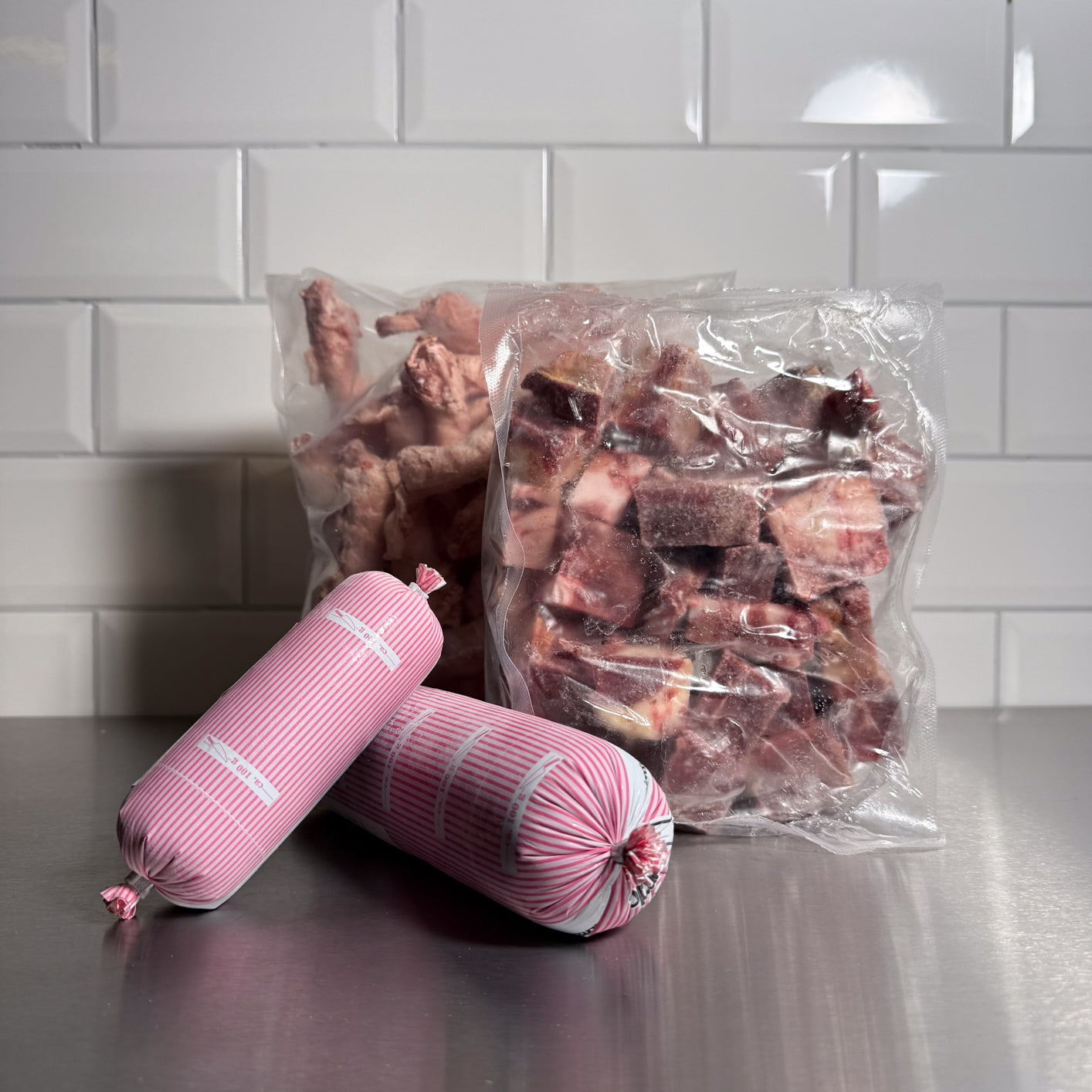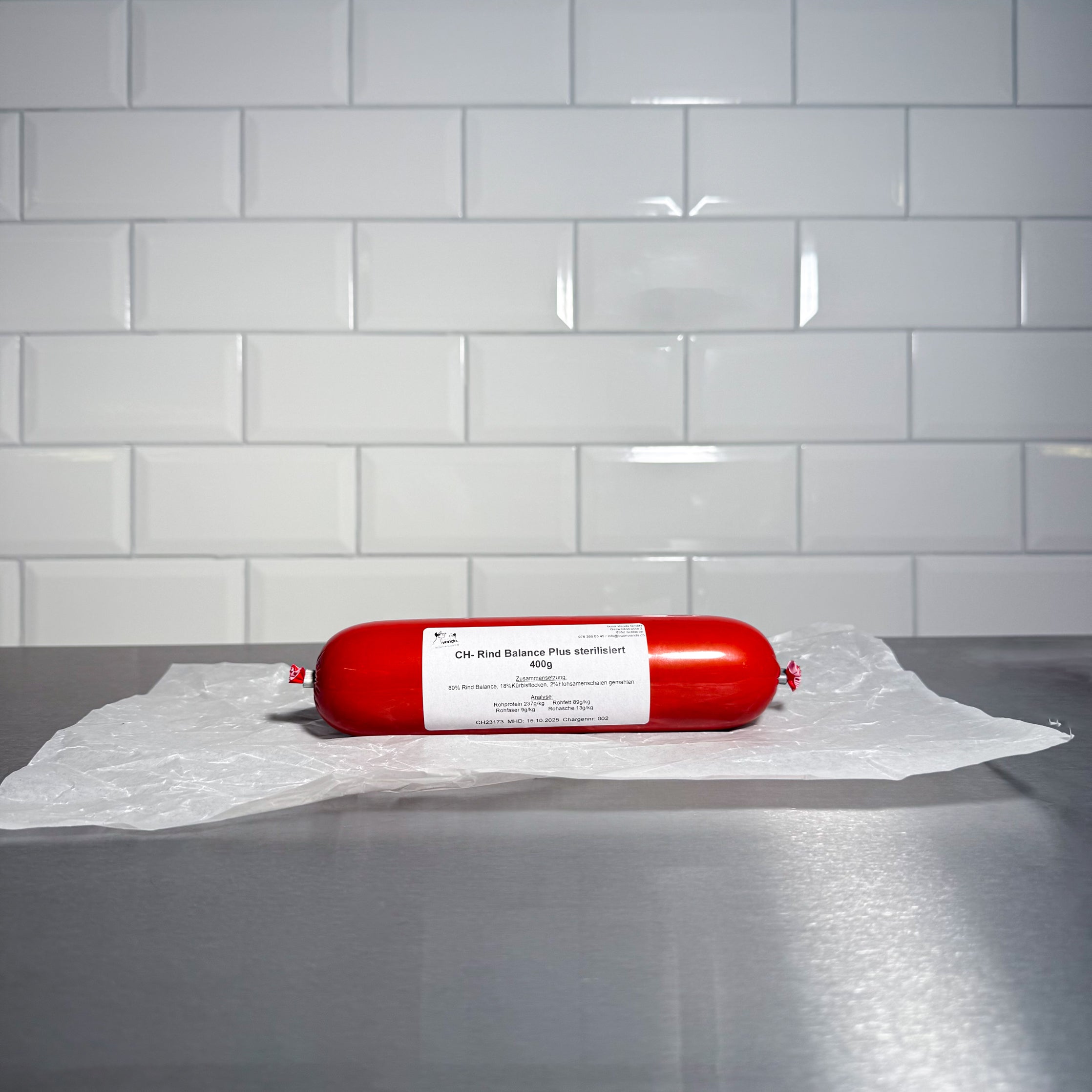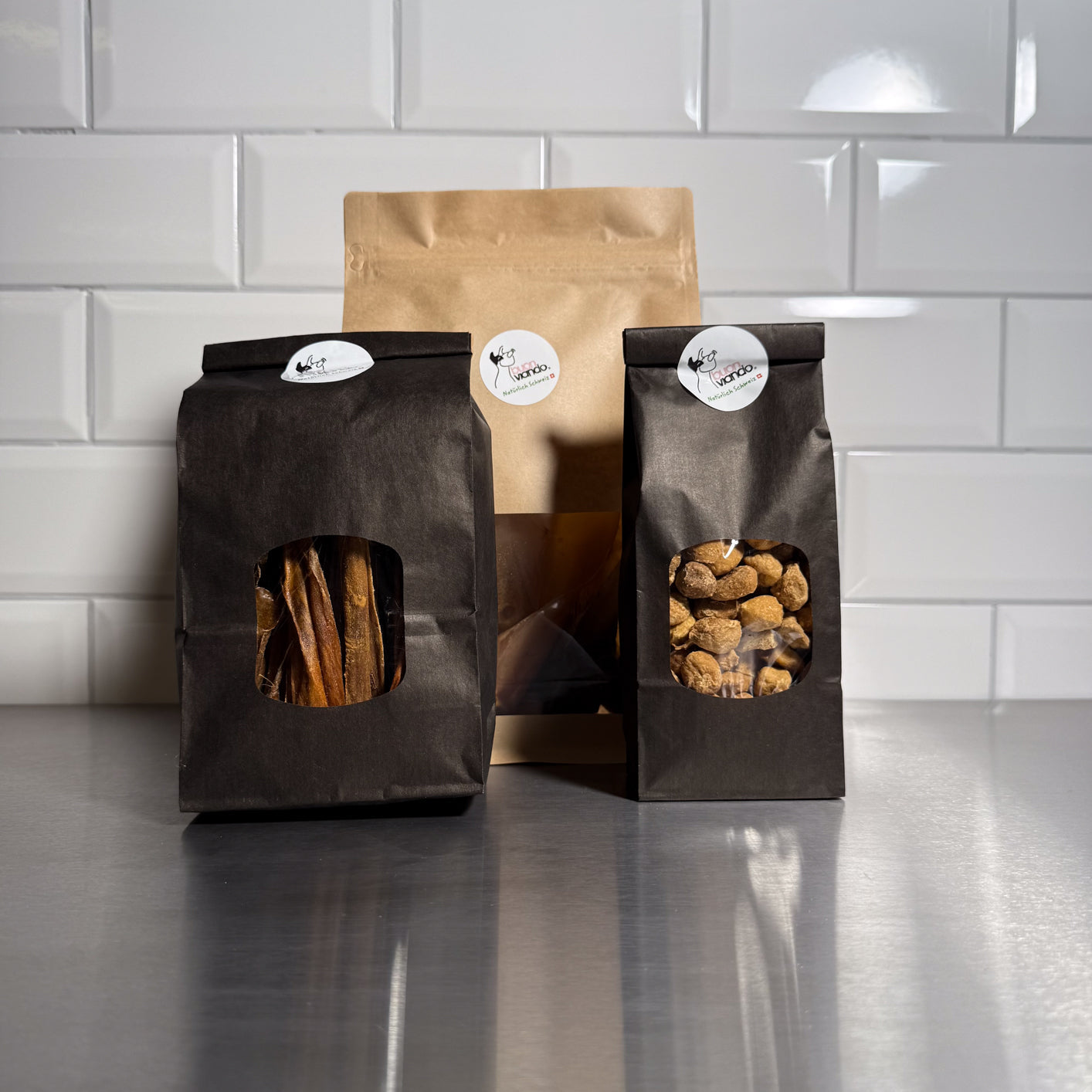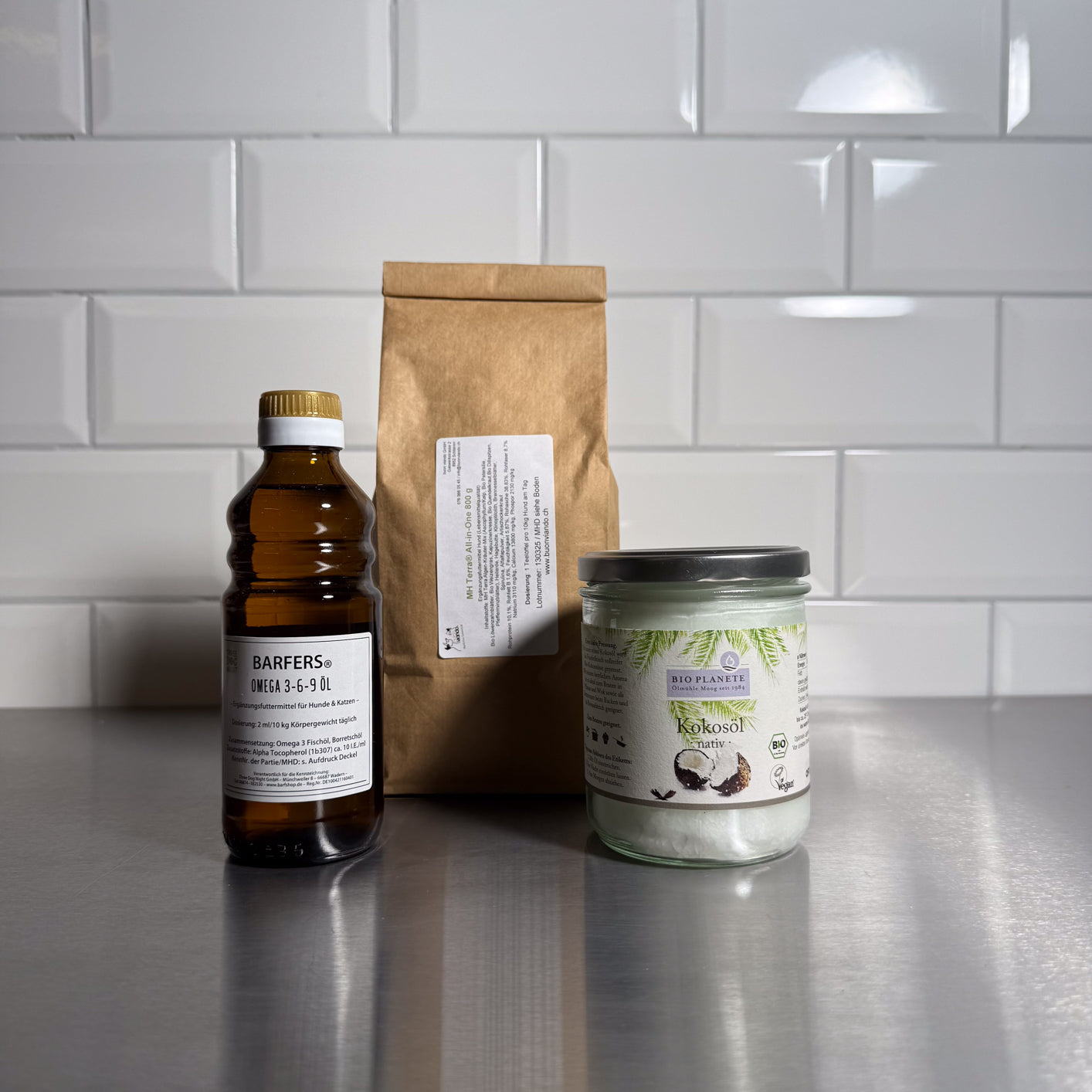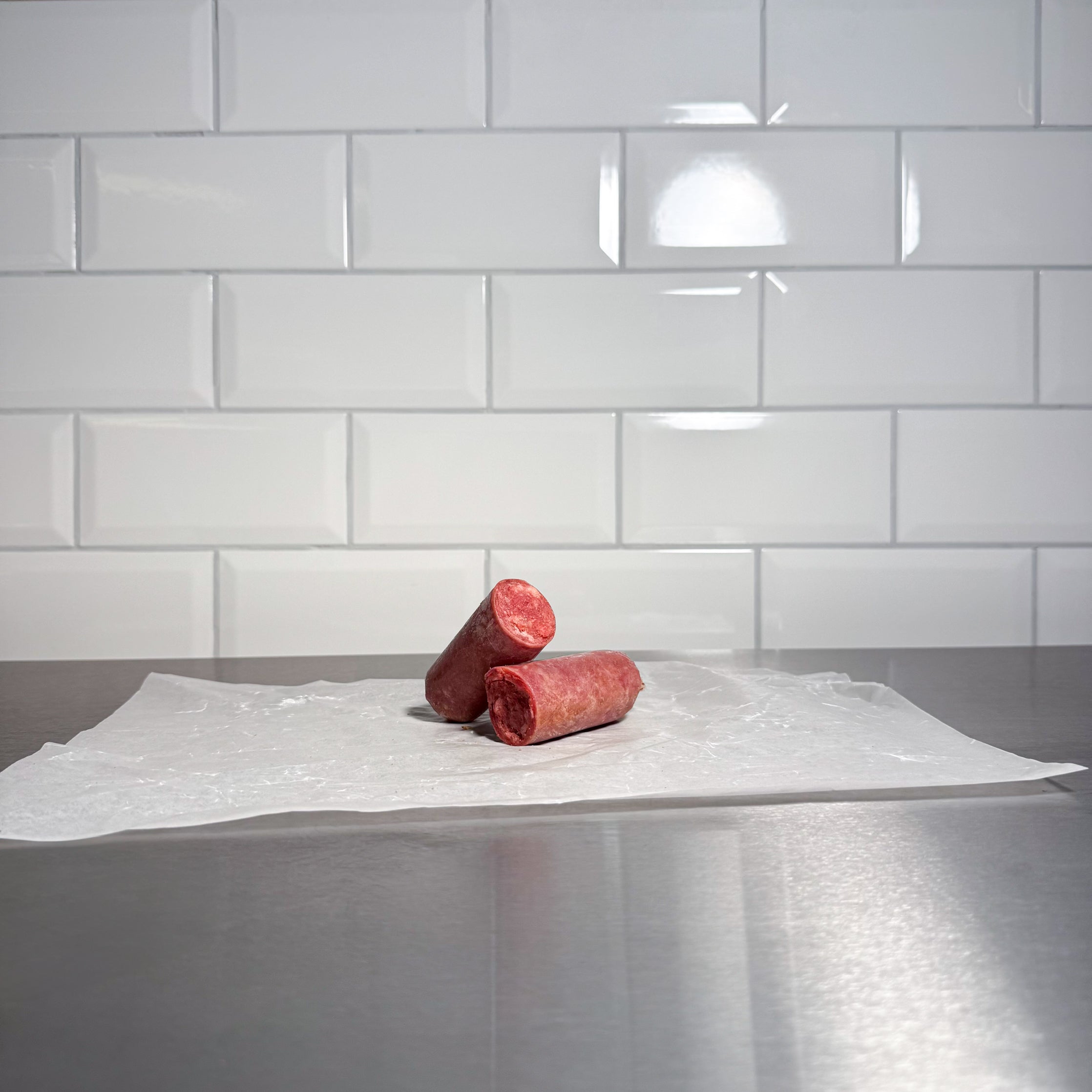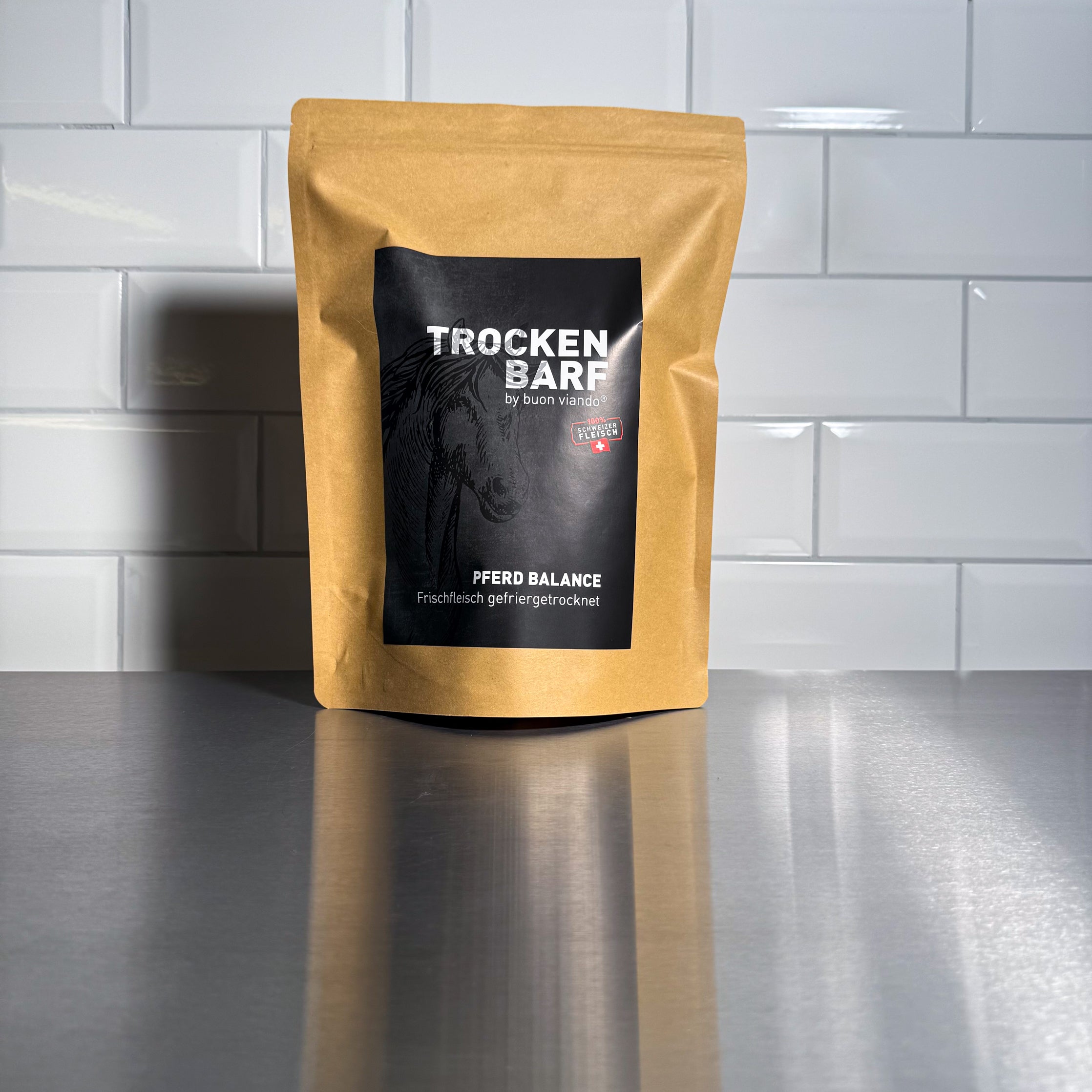BARF Made Easy: How to Properly Thaw Raw Food
BARF is simple – when you know how! There are a few things to keep in mind when thawing raw dog food to ensure it stays fresh and your dog can digest it properly. But don’t worry – with a few easy tips, feeding becomes even more straightforward.
Why is the right thawing method important?
Raw meat contains moisture – and moisture encourages bacterial growth, especially at warm temperatures. That’s why BARF should always be thawed in the refrigerator. This preserves quality and ensures your dog gets a healthy meal.
Important: Meat should not be thawed at room temperature, as bacteria can multiply quickly. Once the temperature rises above 8°C (46°F), the risk of bacterial contamination increases.
How to thaw BARF properly:
-
Remove the meat from the packaging or cut it open – this prevents bacteria from multiplying in trapped moisture.
-
Place it in a bowl – preferably glass or porcelain.
-
Cover loosely with a plate or lid – this keeps it protected while allowing airflow.
-
Let it thaw in the refrigerator – depending on the amount, this can take 16 to 36 hours.
Guidelines for thawing times:
-
250g bag: 16–20 hours
-
500g package: about 24 hours
Tip: Need only small amounts? Freeze portioned pieces and thaw only what your dog needs.
Can BARF be fed frozen?
No, raw meat should not go directly from the freezer to the bowl. Cold food can cause digestive issues.
Better: After thawing, let the food sit briefly at room temperature to warm up – but not too long! Allow it to reach room temperature for a maximum of 15 minutes or pour 1–3 tablespoons of boiling water over the meal. The heat can help kill unwanted germs.
How long does thawed raw meat last, and how should it be portioned?
Thawed raw meat in 500g and 250g packages will keep in the refrigerator for 2–3 days.
Frozen meat is often difficult to cut. Portioning small amounts can be especially challenging for very small dogs or cats. A proven method is to let the frozen meat thaw slightly in the fridge, then cut it into slices that can be refrozen individually. A high-quality bread knife or special meat knife is especially useful for portioning with minimal effort.
For very small quantities, here’s a clever trick: ice cube trays. Portion the meat into small cubes, fill lightly oiled ice cube molds, and freeze. Later, you can easily remove individual mini portions and thaw them as needed.
One important question is whether thawed meat can be refrozen.
The rule is: meat thawed at room temperature should not be refrozen, as this promotes bacterial growth. However, refreezing is safe if the meat has remained frozen or well chilled throughout. That way, it stays safe and can be reused without issue.
Observe proper hygiene
- All utensils and surfaces that come into contact with raw meat must be thoroughly cleaned.
- The food bowl should be cleaned after every meal to prevent germ buildup.
- Food should not be left at room temperature longer than necessary.
Conclusion
Proper thawing keeps BARF fresh and hygienic. Best practice: thaw in the refrigerator – not at room temperature! Smart portioning, such as with ice cube trays or pre-cut pieces, saves time and makes feeding easier. Hygiene is essential: always clean bowls and utensils thoroughly.

